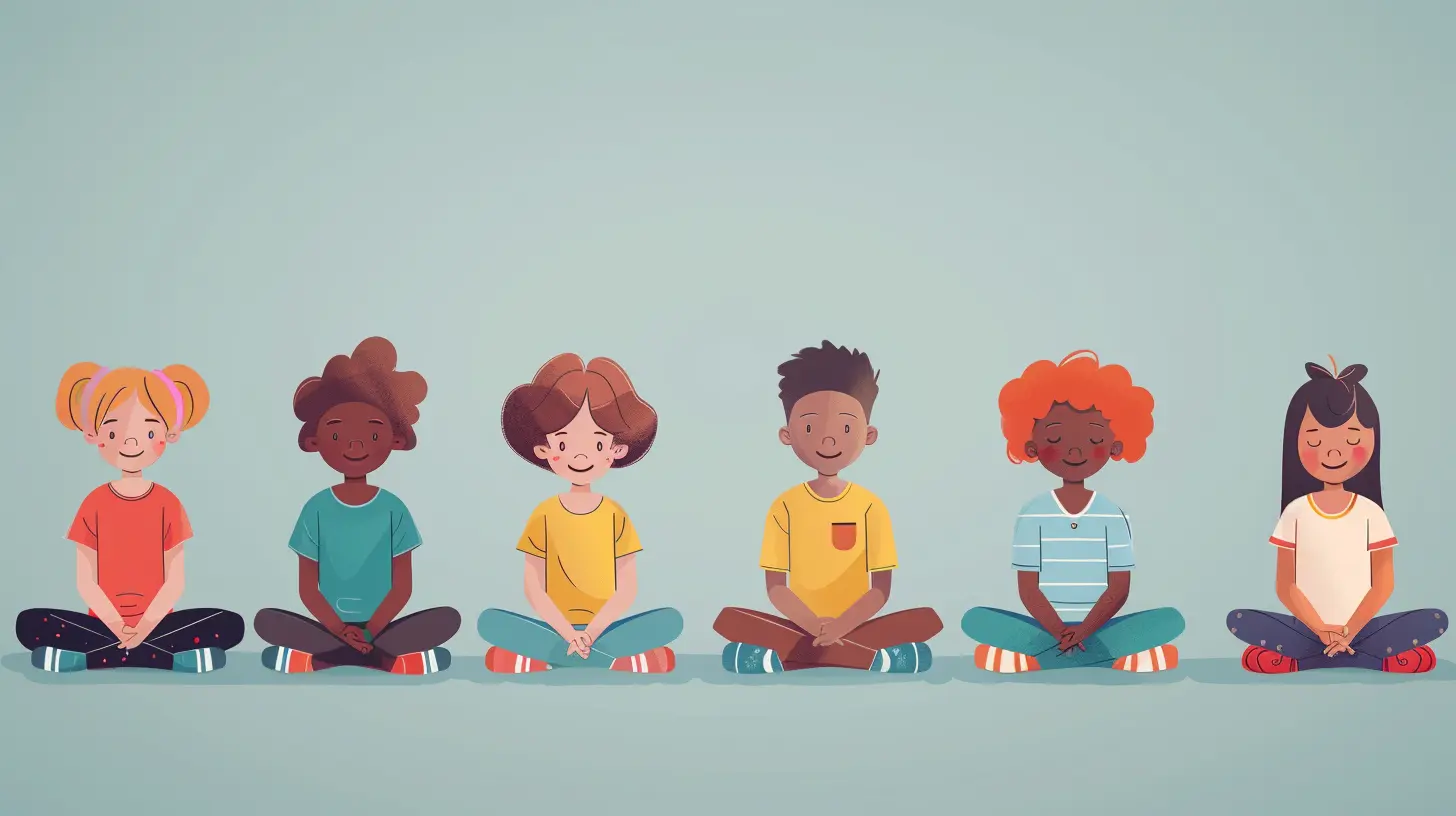How Mindfulness Training Can Help Prevent Bullying
22 May 2025
Bullying has become a widespread issue in schools, workplaces, and even online. It affects both the victims and the perpetrators, creating a toxic cycle of aggression and pain. But what if there was a way to break this cycle? Mindfulness training could be the missing piece in preventing bullying before it even starts.

What Is Mindfulness, and Why Does It Matter?
Simply put, mindfulness is the practice of being fully present in the moment. It means paying attention to thoughts, emotions, and surroundings without judgment. Imagine your mind as a wild horse—mindfulness helps you gently guide it rather than letting it run out of control.When people practice mindfulness, they develop better emotional regulation, empathy, and self-awareness. These qualities play a crucial role in preventing bullying because they help individuals manage their own emotions and understand those of others. But how exactly does mindfulness training help in the fight against bullying? 
The Link Between Mindfulness and Bullying
Bullying often stems from deep-seated emotional struggles. Frustration, insecurity, and a lack of empathy fuel aggressive behavior. On the flip side, victims of bullying often suffer from stress, anxiety, and low self-esteem. Mindfulness training addresses both sides of this equation by helping individuals become more in tune with their emotions and reactions.1. Enhancing Emotional Regulation
One of the main reasons people bully others is because they don’t know how to handle their own emotions. They lash out instead of processing feelings in a healthy way. Mindfulness helps individuals become more aware of their emotions, making it easier to control outbursts and aggressive tendencies.For example, a student who feels anger rising can use mindfulness techniques—like deep breathing or counting to ten—to calm themselves instead of reacting with aggression.
2. Building Empathy and Compassion
Empathy is the ability to put yourself in someone else’s shoes. Many bullies lack empathy, meaning they don’t fully grasp the pain they inflict on others. Mindfulness encourages people to observe emotions—both their own and others’—without judgment.Through mindfulness exercises like loving-kindness meditation, individuals learn to cultivate compassion, making them less likely to mistreat others. When a potential bully sees a classmate struggling, instead of mocking them, they may offer support.
3. Reducing Stress and Anxiety in Victims
Being bullied is a traumatic experience that can have long-term psychological effects. Victims often feel powerless, anxious, and isolated. Mindfulness training can help them manage stress and rebuild self-confidence.By practicing mindfulness, victims can learn to detach emotionally from the bully’s hurtful words and actions. Instead of internalizing negativity, they develop resilience and self-acceptance.
4. Encouraging Self-Reflection in Bullies
Most bullies don’t wake up one day and decide to hurt others—it often stems from their personal struggles. Mindfulness encourages self-reflection, allowing bullies to recognize the root of their behavior.When they take time to observe their own thoughts and emotions, they may discover that their actions are driven by insecurity, peer pressure, or unresolved pain. This awareness can be the first step toward change. 
How Schools Can Implement Mindfulness Training
If mindfulness is so powerful, how can schools incorporate it into their anti-bullying efforts? The good news is that mindfulness training doesn’t require expensive programs or complex strategies. Small, consistent efforts can make a huge impact.1. Integrating Mindfulness into the Classroom
Teachers can introduce simple mindfulness exercises at the beginning of the school day. For instance:- Deep breathing exercises – Encouraging students to take deep breaths before a test or stressful situation.
- Body scans – Helping students check in with how their bodies feel, promoting relaxation.
- Mindful listening – Teaching students to truly hear what others are saying without interrupting or judging.
These small activities can lay the foundation for emotional awareness and stress management.
2. Teaching Conflict Resolution with Mindfulness
Instead of punishing students for conflicts, schools can use mindfulness-based conflict resolution techniques. Teachers and counselors can guide students through mindfulness exercises to help them cool down before discussing disputes. This creates a safe space where students can express emotions without aggression.3. Encouraging Mindful Communication
Often, bullying starts with words—hurtful comments, teasing, or name-calling. Schools can teach mindful communication, which focuses on speaking with kindness and intention. This includes:- Thinking before speaking
- Avoiding impulsive responses
- Using words to uplift, not tear down
By promoting these habits, schools can reduce verbal bullying incidents.
4. Mindfulness-Based Peer Support Programs
Creating peer-led mindfulness groups can help both potential bullies and victims. These groups provide a supportive environment where students can discuss emotions, practice mindfulness techniques, and build strong, positive relationships.When students support each other in emotional awareness and self-growth, the overall school culture shifts toward kindness and respect. 
Mindfulness at Home: How Parents Can Reinforce It
Mindfulness isn't just for the classroom—parents can also play a key role in preventing bullying by fostering mindfulness at home.1. Encouraging Open Conversations
Children should feel comfortable discussing their emotions. Parents can encourage this by asking open-ended questions like:- "How did you feel today?"
- "What was the best and hardest part of your day?"
- "Did anything make you upset, and how did you handle it?"
This helps children recognize and express emotions instead of bottling them up.
2. Modeling Mindfulness
Children learn by example. If parents practice mindfulness—whether through meditation, deep breathing, or simply being present during conversations—kids are more likely to adopt the habit.3. Teaching Kindness as a Daily Practice
Parents can encourage kindness by creating small daily habits such as:- Saying something kind to a family member each day
- Writing or drawing positive messages for friends
- Practicing gratitude by discussing things they’re thankful for
These tiny steps contribute to a mindset of empathy and compassion.
The Long-Term Impact of Mindfulness on Bullying
Mindfulness isn't a quick fix; it's a long-term investment in emotional intelligence, empathy, and self-awareness. When mindfulness becomes a part of daily life, it transforms the way individuals relate to themselves and others.Imagine a world where kids grow up understanding their emotions instead of acting out in anger. A world where empathy is second nature, creating a ripple effect of kindness. This is what mindfulness can achieve—not just in schools, but in communities, workplaces, and beyond.
Bullying may not disappear overnight, but by incorporating mindfulness, we can create a culture where aggression and cruelty have no place. It all starts with awareness, one mindful moment at a time.
all images in this post were generated using AI tools
Category:
Bullying PreventionAuthor:

Anita Harmon
Discussion
rate this article
3 comments
Darrow Snyder
Great insights! Mindfulness training truly empowers students to foster empathy and reduce bullying.
May 29, 2025 at 12:53 PM

Anita Harmon
Thank you! I'm glad you found the insights valuable. Mindfulness can indeed be a powerful tool in promoting empathy and reducing bullying among students.
Brianna Lewis
This article beautifully highlights the power of mindfulness in creating a compassionate environment. By fostering awareness and empathy, we can empower individuals to recognize and address bullying before it starts. Let's embrace mindfulness not just as a practice, but as a vital tool for building a kinder, more inclusive community.
May 25, 2025 at 3:02 AM

Anita Harmon
Thank you for your thoughtful comment! I completely agree—mindfulness is essential for fostering empathy and compassion, which are key in preventing bullying and creating inclusive communities.
Jemima Martinez
Mindfulness training can significantly reduce bullying by fostering empathy and self-awareness in students. By teaching emotional regulation and promoting a positive school environment, mindfulness equips individuals with the tools to manage conflicts and cultivate kindness.
May 22, 2025 at 4:03 AM

Anita Harmon
Thank you for your insightful comment! I completely agree that mindfulness training not only enhances empathy and self-awareness but also plays a crucial role in creating a compassionate school atmosphere that can effectively reduce bullying.



